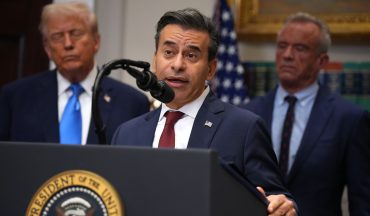
- HealthTech
Chinese Gray Market for Obesity Drug Ingredients Surges 44%
6 minute read

Americans seek unregulated obesity drug ingredients from Chinese suppliers as prescription costs remain out of reach
Key Takeaways
- 44% surge in Chinese gray market imports for obesity medication ingredients in January alone, as Americans bypass high prescription costs through unregulated channels
- $150 billion global market projection by 2035 for obesity drugs, with penetration rates expected to jump from 1% to 20% of the obese population in the U.S.
- FDA withdrawal of semaglutide shortage designation in March 2024 eliminates legal justification for compounding pharmacies, yet gray area operations continue through alternative formulations
Introduction
Americans are increasingly turning to unregulated Chinese suppliers for obesity medication ingredients, creating a booming gray market that bypasses traditional pharmaceutical channels. The Partnership for Safe Medicines reports a 44% increase in shipments of active ingredients from unregistered Chinese entities in January compared to the previous month.
This surge stems from limited health insurance coverage and the FDA’s decision last year to prohibit compounding pharmacies from selling obesity medicines at lower costs than original developers. The trend raises significant safety concerns as consumers import substances often labeled “for research purposes” to access affordable alternatives to expensive prescription drugs.
Key Developments
The gray market expansion accelerated after the FDA withdrew semaglutide’s drug shortage designation in March 2024. This action eliminated the legal framework that allowed compounding pharmacies to produce cheaper versions of popular obesity medications like Ozempic and Wegovy.
Compounding pharmacies now operate in regulatory gray areas by sourcing semaglutide sodium or semaglutide acetate—forms not found in FDA-approved medications. These facilities often add vitamin B12, L-carnitine, or NAD+ to create unique formulations that potentially avoid classification as identical to commercial drugs.
Medicinal packages valued under $800 enter the U.S. under the de minimis rule, complicating tracking efforts. These consignments frequently arrive through undisclosed means, making actual import volumes likely higher than reported figures suggest.
Market Impact
The obesity medication sector demonstrates explosive financial growth driven by unprecedented demand. Novo Nordisk reported $21.1 billion in combined global sales for its GLP-1 products in 2023, representing nearly two-thirds of total revenue and an 89% year-over-year increase.
Prescription volume data reveals the market’s rapid expansion, with semaglutide prescriptions increasing 442% nationally from January 2021 to December 2023. Commercial insurance covered 61% of these prescriptions, highlighting the significant payer burden.
Medicare’s gross spending on leading GLP-1 drugs surged from $57 million in 2018 to $5.7 billion in 2022, despite lacking official coverage for obesity indications. Colorado’s spending on obesity medications for state workers more than quadrupled from 2023 to 2024, while North Carolina’s state employee health plan would need to double premiums to maintain coverage.
Strategic Insights
Major pharmaceutical companies are leveraging obesity drug revenues to expand into adjacent therapeutic areas. Eli Lilly announced plans to acquire Verve Therapeutics for up to $1.3 billion, using cash generated from blockbuster GLP-1 drugs Mounjaro and Zepbound to enhance genetic medicine capabilities.
The market structure favors established players with manufacturing scale and regulatory expertise. Manufacturers such as Novo Nordisk and Eli Lilly maintain pricing power despite growing gray market competition, as branded products offer quality assurance that unregulated alternatives cannot match.
Telehealth startups capitalize on regulatory gaps by facilitating access to compounded GLP-1 options through virtual consultations and wellness programs. These companies offer transparency in pricing and convenience, though critics question regulatory compliance and clinical safety standards.
Expert Opinions and Data
Morgan Stanley projects the global obesity drug market could reach $150 billion by 2035, with penetration rates climbing from approximately 1% of the obese population today to 10% within a decade. In the U.S. market specifically, penetration could reach 20% as access barriers diminish.
Industry analysts note that real-world evidence on broader healthcare cost impacts remains limited. Early data suggest that while drug costs are substantial, corresponding reductions in overall medical expenses have not yet materialized, challenging assumptions about cost offsets through improved health outcomes.
According to Reuters, the trend toward gray market sourcing reflects fundamental accessibility issues in the U.S. healthcare system. The data likely underrepresents actual import volumes, as tracking mechanisms for these shipments remain inadequate.
Research indicates China ranks as the second-most-popular country for obesity trials, behind the U.S. and ahead of Australia, despite only 6% of Chinese people being considered obese compared to 40% of Americans. This positioning reflects the country’s growing importance in global pharmaceutical development and manufacturing.
Conclusion
The obesity medication gray market represents a direct response to pricing and access challenges in the traditional pharmaceutical system. While regulatory actions have eliminated some legal pathways for lower-cost alternatives, market demand continues driving consumers toward unregulated sources.
The sector stands at a critical juncture where explosive growth potential meets significant regulatory and safety challenges. Resolution of pricing, supply, and compliance issues will determine whether the market can deliver on its transformative healthcare promises while maintaining patient safety standards.








